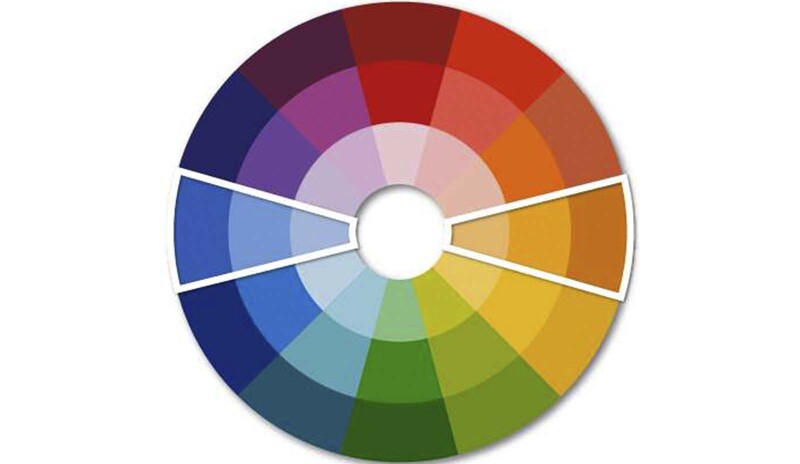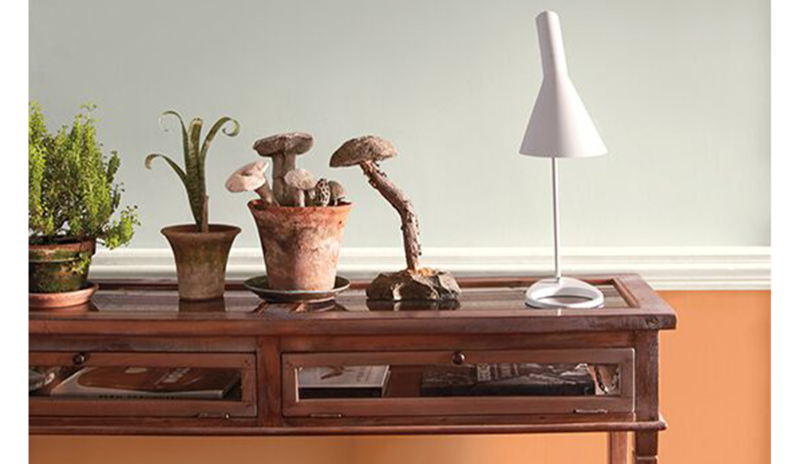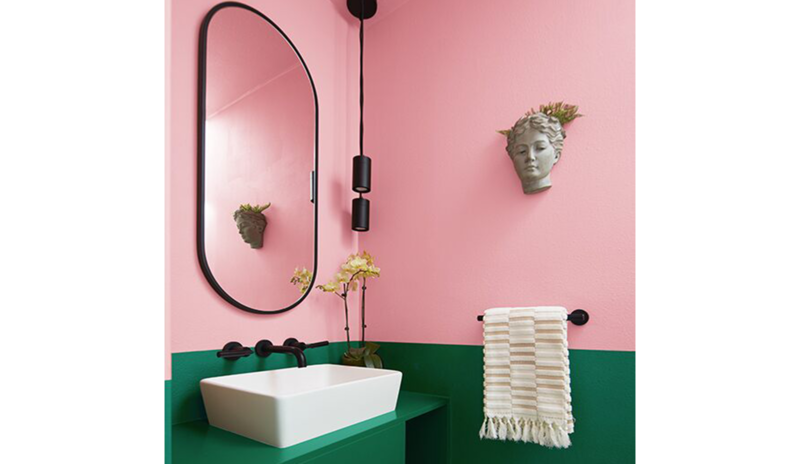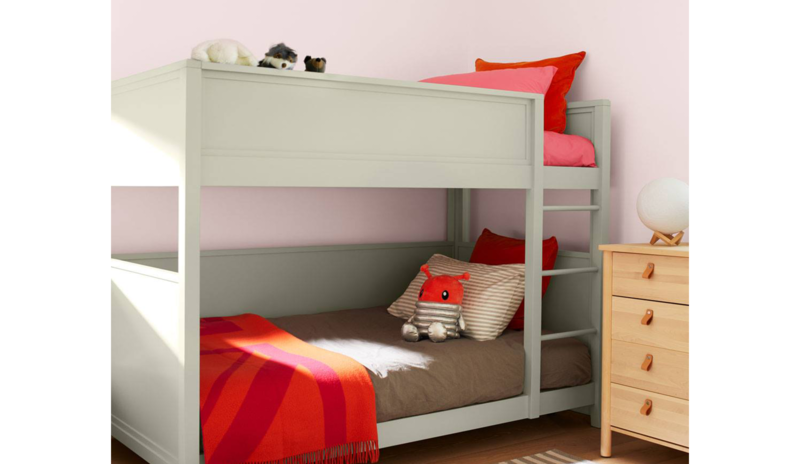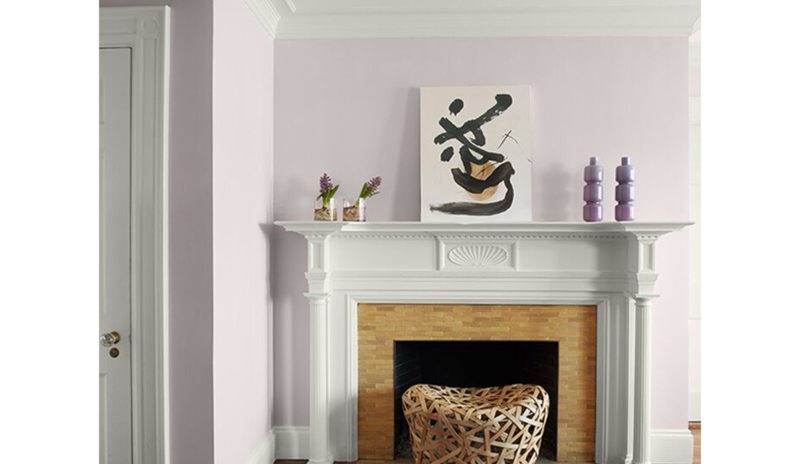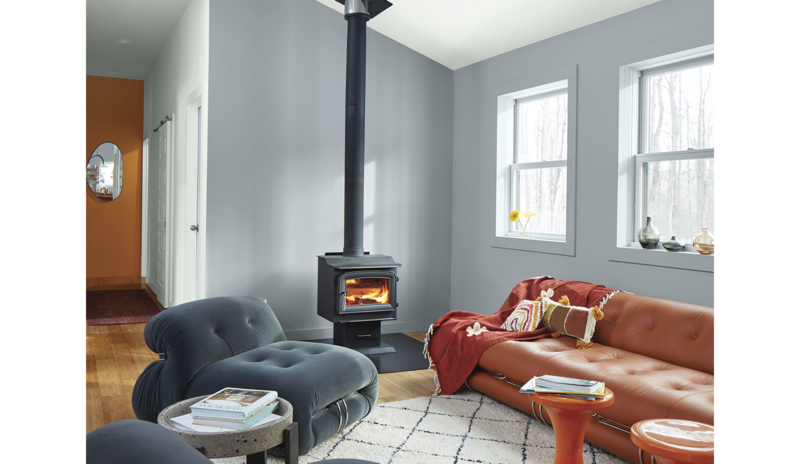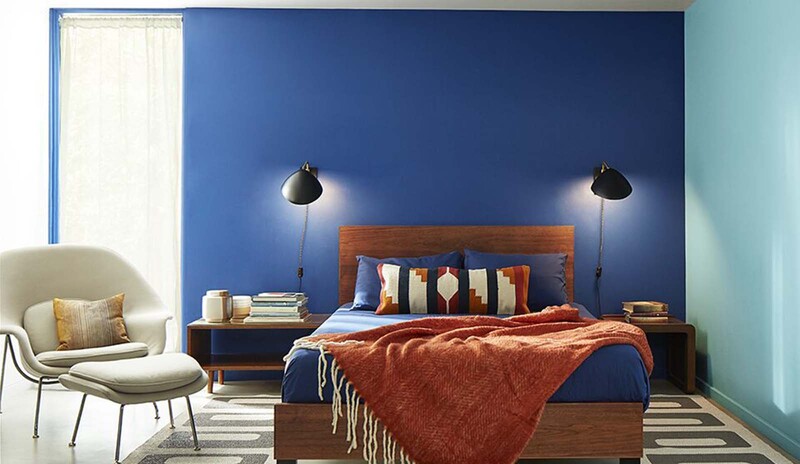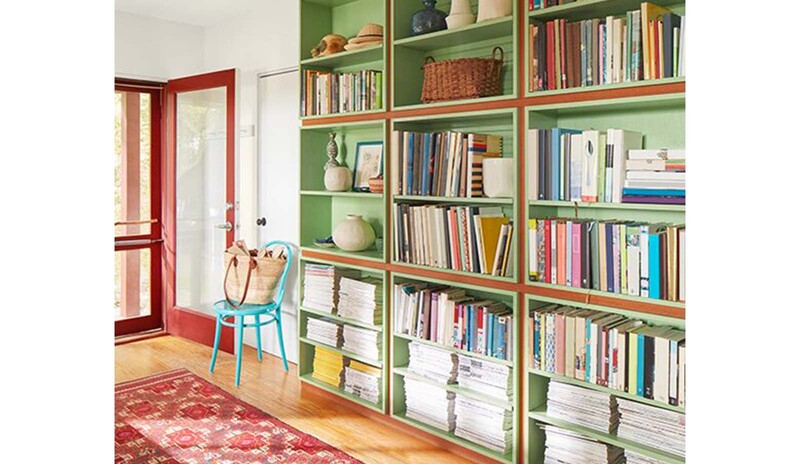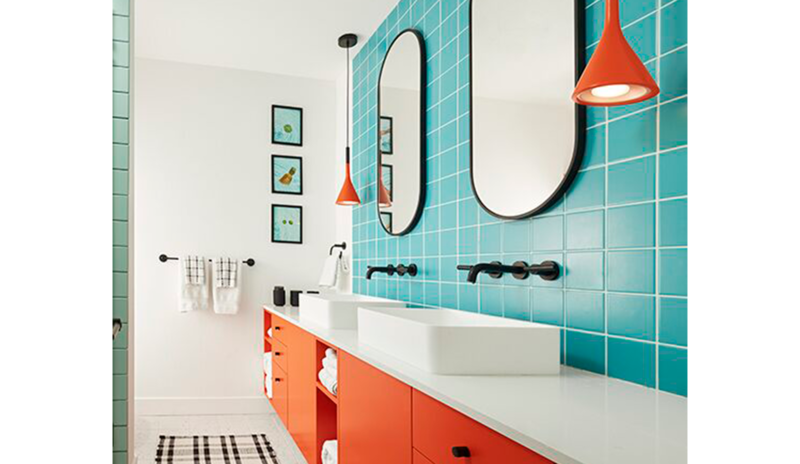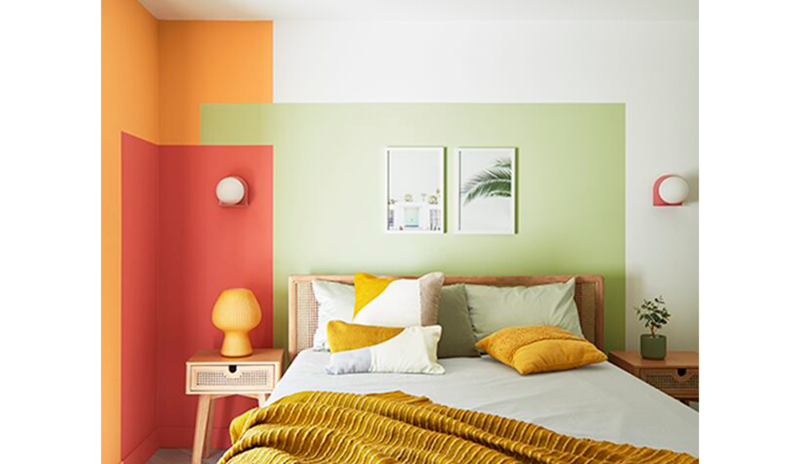The power of complementary colors
Inspirations
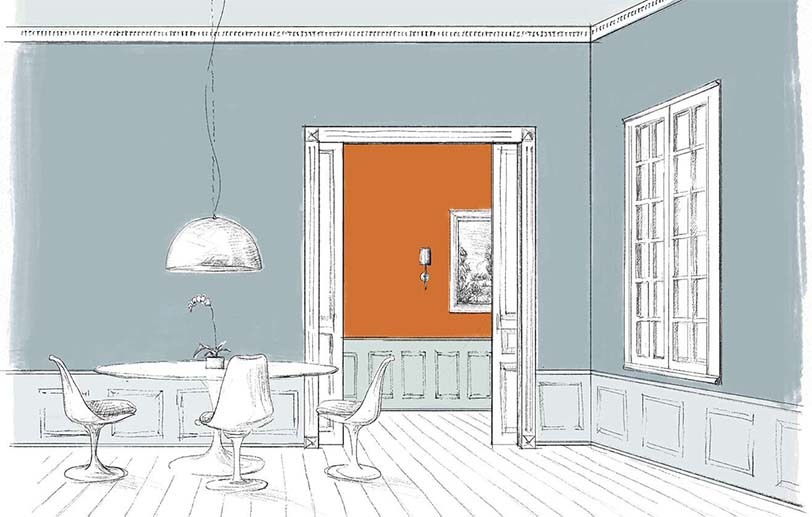
Enhance Your Color Palette with Dynamic Pairings.
If you love the energy and drama color brings to any space, a complementary color scheme is the perfect option for you.
Tips for Using Complementary Colors in Room Décor
- Use hard surfaces like tile, brick, marble and flooring to guide color selection. A rich blue on the walls, like cool Kensington Blue 840, for example, will strike a design cord against warm-toned terracotta tile floors.
- Create complementary color schemes by pairing paint colors with hues found in artwork, pillows, rugs, bedding and curtains.
- Go beyond saturated hues: Homeowner favorites like neutrals and grays can also be used in a complementary color scheme. The trick is to decipher the color’s undertones. Compare your chosen hue with others that are similar—holding color chips next to one another should show you the subtle differences and help you to figure out the undertone.
Complimentary vs. Complementary?
As stated above, “complementary” refers to colors that sit opposite each other on the color wheel.
“Complimentary” is related to expressing admiration—which clearly, the just-right complementary color scheme is sure to evoke!
Frequently Asked Questions
Q. What are complementary colors?
A. Complementary colors are color pairings of hues found opposite of one another on the color wheel.
Complementary color schemes pair warm and cool color wheel hues as follows:
- Red and Green
- Orange and Blue
- Yellow and Purple
A stellar example of “opposites attract,” when used together, complementary color schemes create eye-catching visual contrast since they enhance each other's intensity.
Complementary colors can be bold and saturated or soft and muted.
Q. How do I choose a complementary color scheme for my home?
A. To select complementary colors, start by identifying the main color you are dedicated to using. Then, refer to the color wheel and find the color directly opposite the one you selected to find the complementary color. Here is a quick snapshot of complementary color scheme pairings from the color wheel.
- Red and Green
- Orange and Blue
- Yellow and Purple
Any shade or tint—from bold and saturated to soft and muted—within these pairings will create a complementary color scheme.
Q. How can I use complementary colors in my color scheme without it being overwhelming?
A. There are a few ways to avoid your complementary color scheme overwhelming your space.
- You can use softer, more muted tones of the paired color families.
- When painting, try a bold complementary color scheme for a powder room, mud room, or kids’ room versus a more heavily trafficked space.
- Use complementary color schemes in moderation by matching them to accent colors within artwork, furniture upholstery and other home accessories.
Q. Can I use shades or tints of complementary colors in my color scheme?
A. Using shades or tints of complementary colors creates a more nuanced and balanced color scheme. By adjusting the saturation levels—think pales and pastels or deep jewel tones—of the selected colors, you can achieve a harmonious effect that provides visual contrast.
You can see how a range of complementary color schemes will look in your space by using the photo and video visualizers on the Benjamin Moore Color Portfolio® Mobile app.
Q. Are there any specific complementary color schemes that work well in certain rooms?
A. While color selection is always personal, here are some complementary color schemes we love for specific rooms:
- Kids playroom: Try a cobalt blue like Evening Blue 2066-20 and a cheery orange like Peach Crisp 159 to create a vibrant complementary color scheme.
- Guest room: A soft green like Silken Pine 2144-50 and a rich brick red like Cottage Red HC-184 is both stylish and tranquil.
- Living room: Consider an aubergine purple couch—think Autumn Purple 2073-20 and a buttery soft yellow wall like Ylang Ylang AF-305 for an elegant alternative to neutral.
